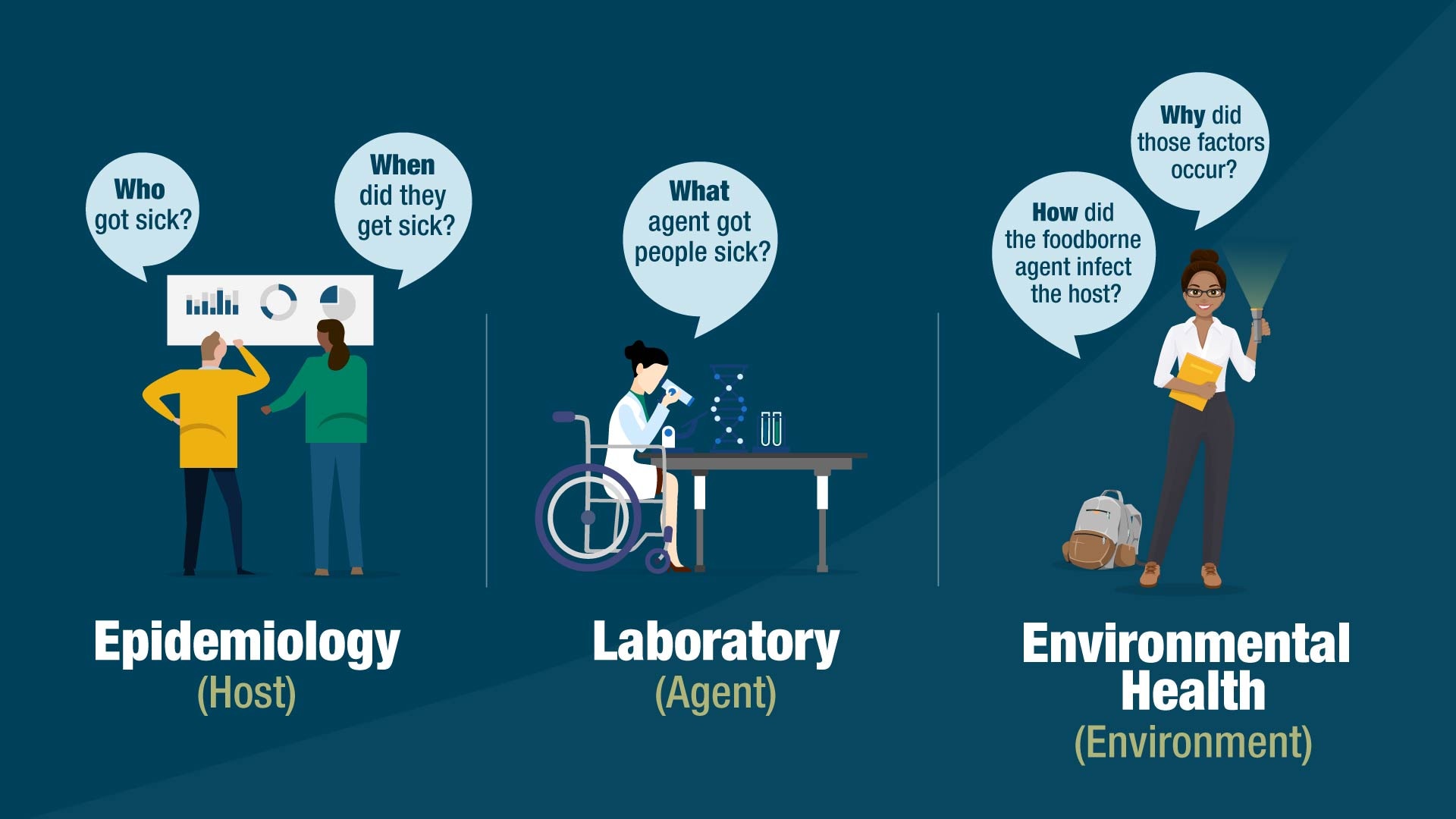At a glance
Foodborne outbreak investigations are more often successful when they include data collected through epidemiologic investigation, laboratory testing, and environmental health assessment.

Key takeaways
Successful outbreak investigations identify the food item(s), germ(s), and contributing factors of the outbreak. Identifying these data points can help stop the current outbreak and prevent more in the future.
Why this is important
This study adds to evidence showing the importance of a unified public health response during a foodborne outbreak investigation that includes epidemiologists, laboratorians, and environmental health professionals. The results of this study can help guide state and local health departments when investigating a foodborne illness outbreak.
What we learned
Successful investigations more often occur when investigators do these activities:
- Use robust epidemiology investigation techniques, such as a cohort study, to identify the food associated with the outbreak and people who got sick
- Collect and test clinical samples from people who got sick to identify what made people sick
- Conduct a thorough environmental assessment of the outbreak environment
- Epidemiologists conduct activities such as interviewing the people who got sick (hosts) to determine their symptoms and what foods they recently ate.
- Answers the questions: Who got sick and where? What foods did they eat?
- Laboratorians test clinical samples, or stool samples, from hosts to determine what is making people sick (agent).
- Answers the question: What is making people sick?
- Environmental health specialists conduct environmental assessments of the outbreak establishment’s kitchen (environment) and other activities to understand factors that contributed to the outbreak.
- Answers the question: How and why are people getting sick?
More information
Journal article this plain language summary is based on
Study data
Contributing factors and environmental assessments
CDC's Environmental Assessment Training Series
Other information on factors that contribute to outbreaks and why investigators did or did not do environmental assessments
